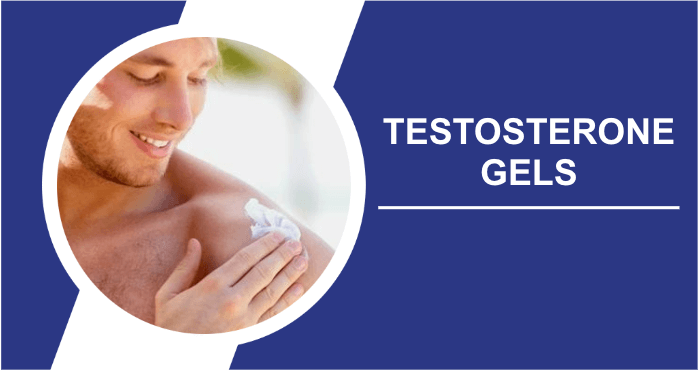Over the few years there has been a noticeable decrease in testosterone levels among men. Consequently more and more men are being recommended testosterone replacement therapy (TRT) to tackle concerns such, as mood, sexual function, body mass index and other related matters.
While there are several methods of administering TRT, the two most commonly chosen options are testosterone gels and injections. Ultimately, the choice between these two methods will be made by you and your healthcare provider. However, the aim of this article is to give you the information you need to make an informed decision about testosterone gels versus injections.
Testosterone Gel Vs. Injection: Everything You Need To Know Discover the distinctions between testosterone gel and injections. When it comes to treating testosterone levels selecting the appropriate method is crucial. Testosterone gel is a topical application that allows for gradual absorption while injections offer a faster increase in levels. Learn about their effectiveness, potential side effects and determine which option aligns better with your lifestyle and requirements. Empower yourself to make informed decisions throughout your journey, with TRT.
What Are Hormones And Why Do We Need Them?
Hormones are like the body’s messengers, tiny chemical powerhouses that orchestrate a symphony of bodily functions. They regulate everything from mood and metabolism to growth and reproduction. Without hormones, our bodies would be like a car without a driver – chaotic and directionless. These tiny molecules play a vital role in keeping us balanced and functioning at our best.
What Exactly Is Testosterone?
Testosterone, often known as the ‘male hormone’ plays a role in the overall well being of both men and women. Consider it as the conductor of an orchestra regulating the rhythm of bodily processes. It contributes to voice deepening, muscle development and hair growth. Its effects extend beyond just muscles.
Testosterone also affects mood, energy levels and even cognitive ability. While it’s more abundant in men, women also need it, just in smaller amounts. So it’s not just about flexing muscles and showing off; testosterone keeps us all in harmony, orchestrating the symphony of our physical and emotional wellbeing.
- Accurate testosterone measurement
- Appointment with a doctor
- Cream and injection options
- Price: $35 – $199
- Rating ⭐⭐⭐⭐⭐
Testosterone Gel Vs. Injections Testosterone Replacement Therapy
There are benefits and drawbacks, to both testosterone gels and injections. They vary in terms of how they are absorbed their effectiveness, how easy they are to use and the potential side effects. It’s crucial to understand these differences when deciding between the two options. Lets explore the advantages and disadvantages of testosterone injections compared to testosterone gels.
Testosterone Injections
Testosterone injections have long been the cornerstone of Testosterone Replacement Therapy (TRT) due to their effectiveness in restoring hormonal balance. These injections provide a direct and efficient method of delivering testosterone to the body by administering it directly into the muscle.
Testosterone enanthate is a type of testosterone that has a longer period of effectiveness meaning fewer injections are needed. It is widely used for testosterone replacement therapy (TRT). Now lets delve into the advantages and disadvantages of using testosterone injections to gain insights, into the benefits and possible drawbacks of this therapy.
Pros
- Precision dosing: Testosterone injections allow for precise dosage adjustments, which is beneficial for individuals who require customised doses to meet their specific hormonal needs.
- Consistent absorption: When testosterone is injected into the muscle, it is absorbed evenly and gradually, resulting in stable blood levels over time. This steady absorption may contribute to a more predictable and stable hormonal balance.
- Increased potency: Due to its higher concentration, testosterone injections may provide more pronounced relief of low testosterone symptoms.
- Less frequent administration: Compared to daily gel applications, injection doses may require less frequent administration, providing convenience for those with busy schedules.
- Reduced transfer concerns: Unlike gels, there is no risk of testosterone transfer through skin contact, reducing concerns about unintentional exposure.
Cons
- Needle phobia: The presence of needles in injections can cause anxiety or discomfort in some people, so overcoming needle anxiety is necessary to accept this method of administration.
- Injection site discomfort: Some people may experience temporary pain or discomfort at the injection site, which can affect their overall experience of injections.
- Fluctuating hormone levels: The frequency of injections can cause fluctuations in testosterone levels, which can lead to energy and mood swings between injections.
- Possible need for medical supervision: Testosterone injections may need to be administered under a doctor’s supervision, involving office visits, which may reduce personal autonomy compared to self-administration methods.
- Risk of allergic reactions: Although rare, allergic reactions to substances or materials used in injections are possible. It is important to recognise potential allergic reactions and seek medical attention if necessary.
When considering your options, it’s important to weigh the pros and cons of testosterone injections for TRT against your specific needs and preferences. A thoughtful discussion with a healthcare professional can help you make a decision that is in line with your health goals and comfort level.
It is also crucial to emphasize the significance of acquiring testosterone for your TRT prescriptions from an authorized supplier. We suggest considering Fountain TRT, a provider that offers a complimentary online evaluation, on their website.
Testosterone Gels
In the few years the use of testosterone replacement therapy (TRT) gels has become increasingly popular, for treating low levels of testosterone. These gels are applied directly to the skin allowing for a controlled release of testosterone. Lets explore the benefits and drawbacks associated with using testosterone gels;
Pros
- Easy to use: The application of Testosterone Gel is a straightforward process that involves simply spreading the gel on to a designated area of the skin.
- Consistent absorption: Testosterone gels are formulated for consistent absorption over time, maintaining stable testosterone levels throughout the day. This can help reduce the variability often associated with other delivery methods.
- Non-invasive: As testosterone gels do not require the use of needles, they may be more appealing to those who are afraid of injections or prefer non-invasive methods.
- Localised treatment: Gels offer the advantage of localised application, allowing users to target specific areas of the body for absorption. This precision can be particularly beneficial when treating specific symptoms or concerns.
- Discreetness: Testosterone gels are discreet and can be easily incorporated into a daily routine. They leave no visible marks or evidence of treatment after application and absorption.
Cons
- Skin sensitivity: Some people may experience skin sensitivity or discomfort at the application site, which can affect the overall comfort of the therapy, ranging from mild redness to more pronounced reactions.
- Transfer concerns: Testosterone gel can potentially be transferred to others through skin-to-skin contact, unintentionally exposing close friends, children or pets.
- Variability in absorption: Absorption of testosterone gel can vary depending on several factors including individual variation, perspiration and skin condition. Close monitoring may be required to ensure consistent and accurate dosing.
- Transfer to clothing: Although the gel is intended to be absorbed through the skin, there is a possibility that it may transfer to clothing before complete absorption, potentially leading to inconsistent dosing or staining of clothing.
- Limited dosing flexibility: Testosterone gels are often supplied in pre-measured amounts, which may limit the ability to tailor the dose to individual needs, offering less individualisation compared to injections.
If you opt for using gels, it is crucial to obtain them from a reputable and licensed prescription fulfillment company. Following thorough research, we confidently recommend Fountain TRT as one of the best online trt clinics.
Choosing Injections And Gels For TRT
When it comes to choosing between testosterone injections and testosterone gels your personal preferences, habits and health factors will be crucial in determining the option for you. Both methods of delivery have benefits that can be customized to meet your specific requirements. Here’s a brief overview of the discoveries from our examination of these two approaches, to testosterone replacement therapy (TRT):
Testosterone gels offer a convenient and non-invasive option for people who want regular testosterone therapy. Their ease of use and controlled absorption make them particularly attractive to those who prefer a hands-off approach.
Testosterone gels may be particularly suitable for people who:
- Have a busy schedule and need a convenient method.
- Seek targeted treatment for specific problems.
- Value discretion and convenience when incorporating TRT into their daily routine.
- Prefer non-invasive procedures and want to avoid needles.
- Conversely, injectable testosterone provides a tailored, potent dose with predictable absorption, making it the choice of those seeking precise hormonal regulation.
Injectable testosterone may be an appropriate choice for those who are:
- Require specific dosage adjustments based on their hormonal needs.
- Seek a higher concentration of testosterone.
- Are willing to tolerate occasional discomfort in exchange for consistent absorption.
- Can overcome a fear of needles.
Ultimately, your decision should be based on your individual needs and preferences, and consultation with a healthcare professional can provide valuable guidance in choosing the most appropriate TRT method for you.
Injection Tips
- Keep the area clean and sterile: To minimise the risk of infection, make sure the area where you are going to give the injection is clean and sterile. After washing your hands thoroughly, apply alcohol to the injection site.
- Rotate injection sites: To avoid using the same area repeatedly, change your injection site regularly. Common injection sites include the glutes, thighs and deltoids. Follow your doctor’s recommendations for site rotation.
- Use sterile equipment: Use a sterile needle and syringe for each injection. Do not re-use syringes or needles.
- Use correct injection technique: Insert the needle into the skin at a 90 degree angle. Withdraw the needle at the same angle, releasing the medication slowly
- Eliminate air bubbles: To ensure accurate dosing, purge the syringe of air bubbles before injection.
- Eliminate air bubbles: Prior to injection, purge the syringe of any air bubbles to ensure accurate dosing.
- Aspiration: Before injecting, gently pull back on the plunger to check for the presence of blood after needle insertion. Adjust the needle if blood is drawn into the syringe.
- Dispose of sharps safely: Place used needles and syringes in a sharps container immediately after use. Do not dispose of them in the normal waste.
TRT (Testosterone Replacement Therapy) injections can present some safety concerns. These concerns encompass impacts on prostate health a potential rise, in red blood cell count (polycythemia) and the possibility of mood changes. Collaborating closely with a healthcare professional can assist in mitigating these risks.
What Other TRT Options Are There Besides Injections And Gels?
Apart from injections and gels there are options available, for testosterone replacement therapy (TRT) that can be customized to suit individual preferences and requirements. Certain individuals opt for testosterone pellets which’re tiny implants inserted beneath the skin to gradually release the hormone over a span of several months.
Transdermal patches, which stick to the skin and deliver a steady dose, are another option. Buccal tablets, which are placed in the mouth against the gums, dissolve and release testosterone. Each method has its pros and cons, giving TRT users the flexibility to find the right harmony for their hormonal health.
- Accurate testosterone measurement
- Appointment with a doctor
- Cream and injection options
- Price: $35 – $199
- Rating ⭐⭐⭐⭐⭐
How Can I Increase My Testosterone Levels Naturally?
Increasing testosterone levels naturally requires making lifestyle adjustments that promote a healthy hormonal balance. Engaging in physical activity particularly strength training and high intensity interval training can be beneficial for boosting testosterone production. Additionally maintaining a balanced diet that includes essential nutrients, like zinc vitamin D and omega 3 fatty acids can support optimal hormone production.
Prioritising quality sleep and stress management is also important, as chronic stress and lack of rest can affect testosterone production. Finally, maintaining a healthy weight and avoiding excessive alcohol and sugar consumption are essential steps to naturally support your testosterone levels. By making these lifestyle changes, you can encourage your body to optimise its hormonal health.
Frequently Asked Questions
How much do TRT injections cost?
The price of TRT injections can differ based on your location the type of injections you receive and whether or not you have insurance. Typically a monthly supply of TRT injections can range from $50 to $300 if you don’t have insurance. Having insurance can considerably lower the amount you need to pay so it’s advisable to contact your provider, for precise cost information.
Is TRT used as a steroid?
No, TRT (Testosterone Replacement Therapy) is not the same as using anabolic steroids for performance enhancement. TRT is a medically supervised treatment used to restore testosterone levels in men with clinically diagnosed low testosterone (hypogonadism). It is designed to restore hormone levels to a normal, healthy range and is used under the supervision of a healthcare professional to treat specific medical conditions.
How much does TRT gel cost?
The price of TRT gel to injections can differ based on factors such, as where you live and your insurance coverage. Typically a one month supply of TRT Gel can range from $100 to $400 if you don’t have insurance. Having insurance can help lower the cost. It’s advisable to reach out to your insurance company for more specific pricing details.
Does testosterone gel really work?
Yes, Testosterone Gel is a legitimate and effective form of TRT when prescribed and used as directed by a healthcare professional. It is designed to increase testosterone levels in people with clinically diagnosed low testosterone and help alleviate symptoms such as fatigue, low libido and mood swings. The effectiveness of TRT Gel can vary from person to person, so it’s important to work closely with your doctor to monitor your progress.
Is TRT safe?
Testosterone replacement therapy (TRT) is generally regarded as safe when its prescribed by a qualified healthcare professional and monitored closely. However like any treatment there are potential risks and side effects to consider. Some common side effects of TRT include acne, fluid retention and changes in mood. Although there can be more serious complications such as cardiovascular issues and prostate problems. It’s crucial to have check ups follow your doctors advice and openly discuss any concerns or side effects with your healthcare provider to ensure the safest and most effective experience, with TRT.
Conclusion
When deciding between testosterone gels and injections, it is important to consider your health goals, your comfort level with the delivery methods, and your willingness to adhere to different dosing schedules. Both approaches can effectively help individuals restore hormonal balance, improve overall well-being, and manage symptoms associated with low testosterone levels. Ultimately, your specific circumstances and personal preferences will determine your choice.
Now that you have an understanding of the differences between testosterone injections and testosterone gel we suggest seeking advice from a doctor who specializes in hormone therapy. It’s important to remember that testosterone replacement therapy is a journey. To make a decision about whether gels or injections are right, for you its recommended to discuss the options with a healthcare professional who can provide knowledgeable guidance. This way you can choose a path that prioritizes your health and empowers you to make the choice for yourself.
Sources
- “Testosterone Therapy With Subcutaneous Injections: A Safe, Practical, and Reasonable Option.” DOI: 10.1210/clinem/dgab772. Read more
- “Testosterone Replacement Therapy.” DOI: 10.12968/hmed.2007.68.10.27326. Read more
- “Novel Methods for the Treatment of Low Testosterone.” DOI: 10.1080/17446651.2023.2197059. Read more
- “Testosterone Replacement Therapy.” DOI: 10.1111/andr.12774. Read more
Dr. Michael Bonner, a clinical psychologist in Salisbury, MD, received his MD and Ph.D. from Columbia University in 1967. Dr. Bonner obtained his MD and Ph.D. from Columbia University in 1967. Since retiring from medicine, he has been writing and editing on topics ranging from healthcare policy to basic science.
In addition to his professional accomplishments, Dr. Bonner is a sought-after speaker at academic and industry conferences, where he shares insights from his extensive career in psychology and healthcare. His work bridges the gap between clinical practice and academic research, influencing a new generation of professionals and students.
Brittany Hernandez specializes in assessing supplements, health technologies, and applications. She continually enhances her skills as a health copywriter. With a Bachelor's degree in Translation and Communication and a background in linguistics, Brittany is skilled at converting complex research into accessible, high-quality content. She is highly regarded in the health industry for her keen eye for detail and ability to identify high-quality health and wellness products.




